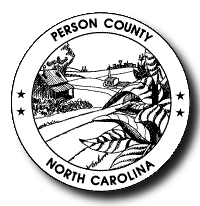| October 2006 Meeting Person County Historical Society met October 24th at the Senior Center. The program this month was given by Kent Cash,
portraying a Captain in the Civil War who performed the duties of postmaster. The rank of captain is denoted by the three stripes
on his jacket. It was required that the
regimental postmaster be an officer. The rank
of First Lieutenant was denoted by one stripe, Second Lieutenant by two stripes, Captain
by three stripes, and finally, Major was denoted by a star.
And if you were ranked as a Sergeant, you had to be able to read, in order
to read the soldiers’ mail to them because so many people were illiterate back then.
Kent explained that John
Reagan served as the only Confederate Postmaster for all four years of the Civil War. He did not receive a salary for the position, but,
rather, earned his pay from selling the stamps and charging
fees. The postal rate was figured by mileage.
The postmaster had a map and a string that was knotted. The distance was figured and the price of the  stamp levied accordingly. For
the first 500 miles, the price was five cents, and over 500 miles was ten cents. If a soldier did not have money for postage,
the letter was marked “postage due upon
delivery” and sent to the recipient. Getting
and receiving mail was very important for
morale. Toward the end of the Civil War, the price went to ten cents
regardless of the mileage. Some of the
people pictured on the stamps were Jefferson
Davis, George Washington (20 cents), Thomas Jefferson (10 cents), Andrew Jackson, and John
C. Calhoun (1 cent). Stamps during that time
came in sheets that were cut with scissors, not perforated.
Envelopes were called covers. stamp levied accordingly. For
the first 500 miles, the price was five cents, and over 500 miles was ten cents. If a soldier did not have money for postage,
the letter was marked “postage due upon
delivery” and sent to the recipient. Getting
and receiving mail was very important for
morale. Toward the end of the Civil War, the price went to ten cents
regardless of the mileage. Some of the
people pictured on the stamps were Jefferson
Davis, George Washington (20 cents), Thomas Jefferson (10 cents), Andrew Jackson, and John
C. Calhoun (1 cent). Stamps during that time
came in sheets that were cut with scissors, not perforated.
Envelopes were called covers.
A highlight during the Civil War, mail
delivery during that time went to the town and people picked it up from the general store
that had a little area inside for a post office or a few boxes for mail delivery. Often, if a neighbor was at the store and knew you
had mail , it was given to them to deliver. Mail
was moved over the country by horse, rail, and buggy.
People during that time in history also took great pride in their penmanship
and many fine letters have been preserved showing such.
Stationery at the beginning of the Civil War had the first national flag of
the Confederacy printed on it in many variations. But,
by the end of the war, stationery was in short supply and people used anything they could
find such as wallpaper or the backs of previous letters.
Glue was also in short supply and other things used were molasses,
cornstarch, pitch, and even horsehair was used to sew the stamps onto the covers
(envelopes). The United States postal system
unofficially honored the “secession mail” at certain exchange points throughout
the United States. The Secretary of the
Treasury at that time was Judah Benjamin, who was the only cabinet member that was Jewish.
Kent also told of past Person County
civilian postmasters such as Clark Oakley and Mr. Van Hook that served during the Civil
War. Postmasters at that time had the first
“laptops”, which was the equivalent of a writing desk that opened to hold ink,
glue, stamps, covers, scissors, and stationery.
We thank Kent for that most
interesting presentation. The next meeting
will be November 28th at Zeko’s
Restaurant on Durham Rd. If you want to join
us for dinner, please arrive between 6:00 and 6:30 p.m.
Our meeting will start at 7:00 p.m. |


